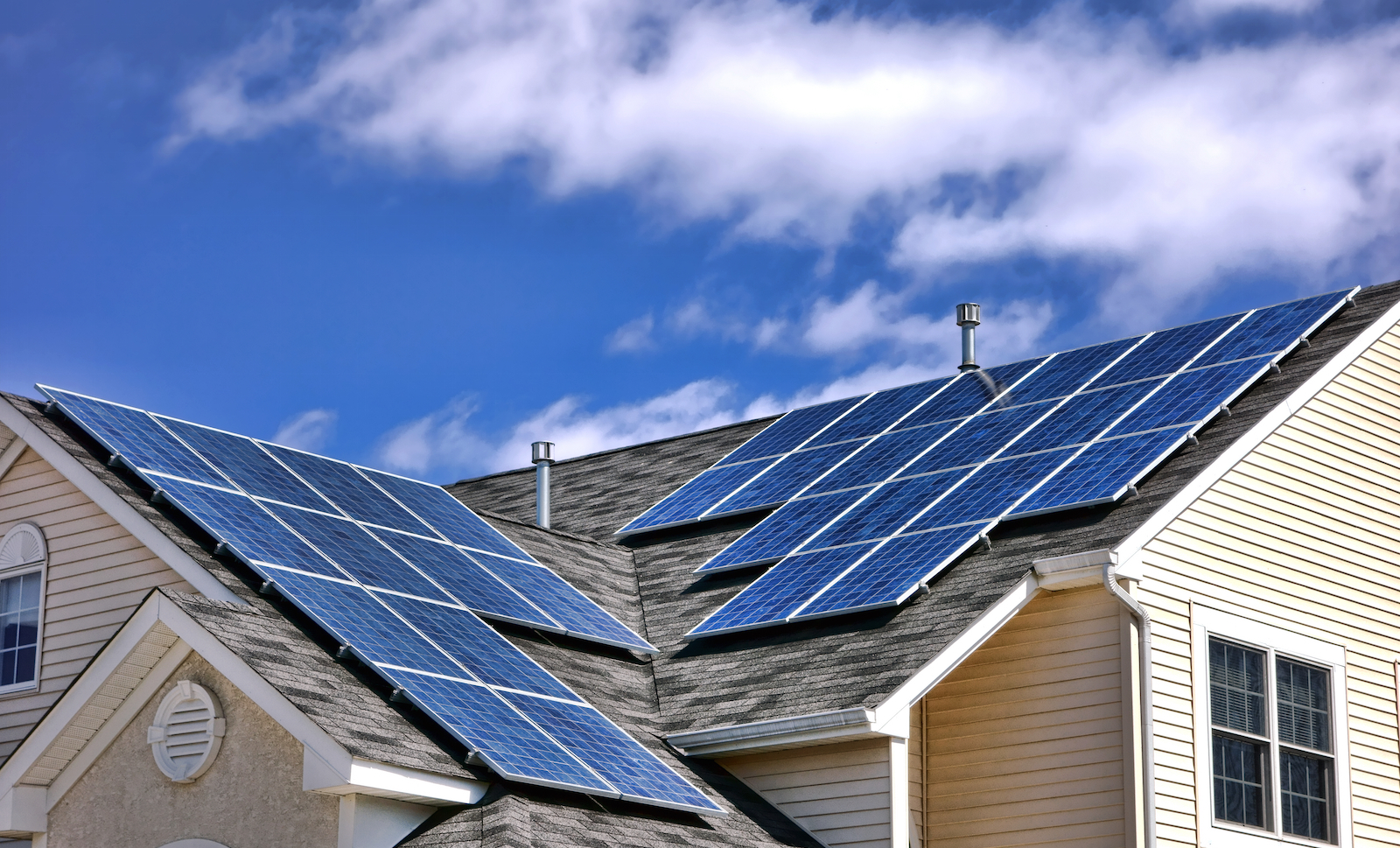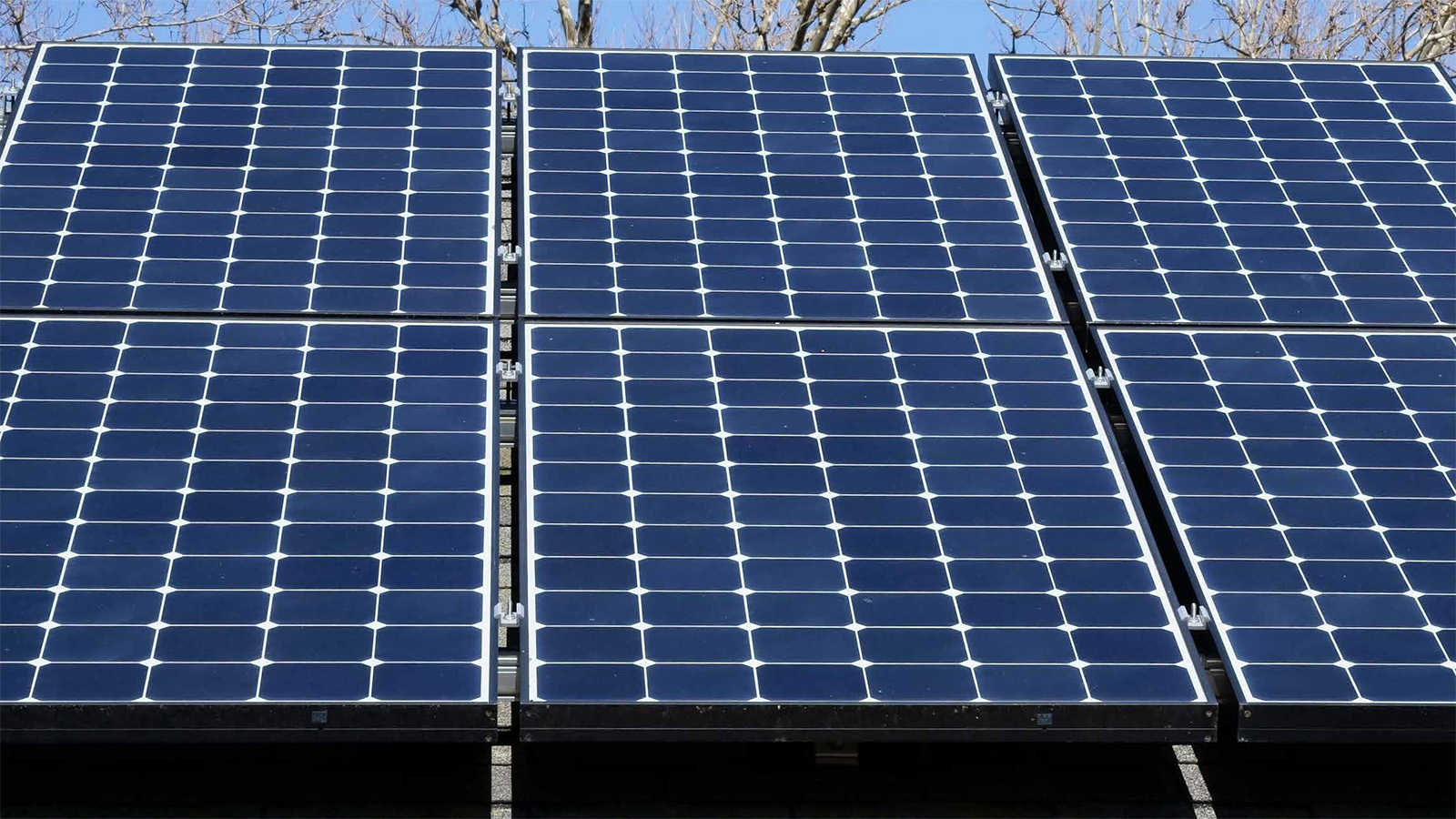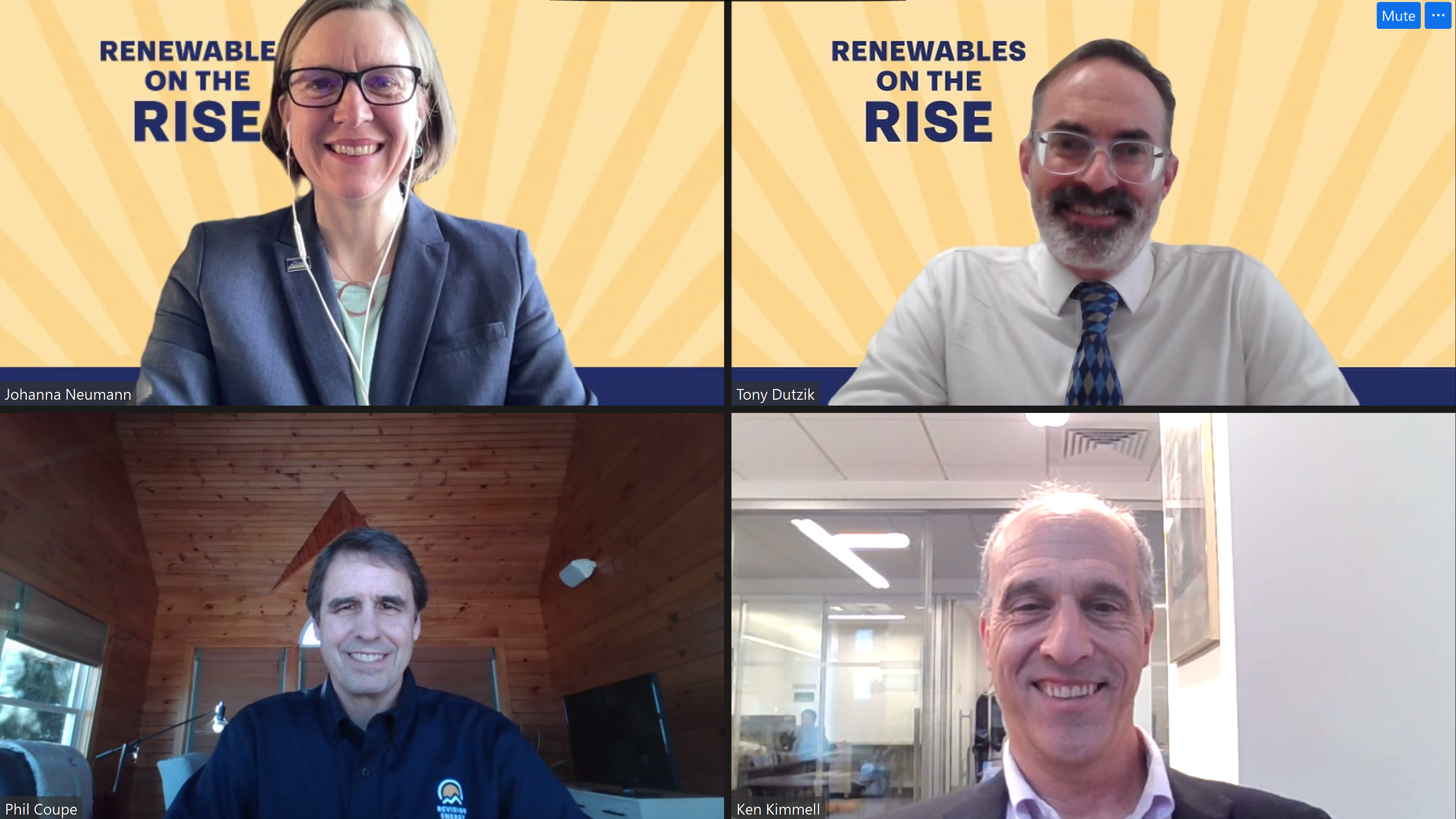
We Have the Power
100% Renewable Energy for a Clean, Thriving America
Wind, solar, and other renewable sources now make up just about 10 percent of the nation’s energy mix, but transitioning to 100 percent clean energy is both necessary and feasible.
Downloads
Environment Washington Research and Policy Center
![]()
Executive Summary
America can address our largest environmental challenges by shifting to 100 percent renewable energy. Renewable energy makes us safer and healthier, protecting our communities from global warming and from hazardous air pollution. Renewable energy reduces the need for dangerous and destructive practices like shipping explosive fuels through our cities, fracking for gas near our water supplies, or razing our mountains to dig up dirty coal.
An economy powered by 100 percent renewable energy is within our reach. First, we can reduce the total amount of energy we use through improved efficiency, even as our economy continues to grow. Second, we can tap America’s virtually inexhaustible supplies of energy from the wind, the sun, the land and the oceans.
Our transition to a clean energy system has already begun. But, with the need to reduce the pollution that causes global warming growing more urgent every day, we need to step up the pace. To maximize the benefits of moving to 100 percent renewable energy, leaders at all levels must act to accelerate our progress. America’s energy policy should facilitate mass deployment of clean energy solutions, support research and development of new clean energy technologies, and keep much of our coal, oil and gas reserves in the ground.
A shift to 100 percent renewable energy can limit the impacts of global warming.
• Clean, renewable energy sources such as wind and solar energy produce little to no global warming pollution. By transitioning to 100 percent renewable energy, we can replace the dirty fuels – including coal, oil and gas – that are causing our planet to heat up.
• Serious impacts of climate change are already underway. The faster we transition away from dangerous fuels, the better able we will be to protect our communities from harm. With rapid action, we can prevent large-scale catastrophes, including permanent flooding of coastal cities, more extreme storms, and widespread food and water shortages.
• In Paris in December 2015, the nations of the world made a historic commitment to protect our climate, pledging efforts “to limit [global] temperature increase to 1.5° C above pre-industrial levels.” In order to achieve that goal, America must transition to 100 percent clean energy before mid-century, and leave most of our remaining coal, oil and gas reserves in the ground.
Renewable energy improves our health, increases our safety, and puts our economy on a sound foundation.
• Moving to 100 percent renewable energy will eliminate air pollution from fossil fuels, making us healthier and longer-lived. Today, air pollution kills about 200,000 Americans a year, reduces our quality of life, and gives our children respiratory diseases like asthma.
• Renewable energy will make us safer. Reaching 100 percent renewable energy will protect our drinking water supplies from hazardous contamination by drilling and fracking. It will also protect our communities by eliminating the need to ship explosive fuels through our neighborhoods on train cars or in leaky pipelines. Generating renewable energy locally (as with rooftop solar panels) can also make our energy system more resilient.
• Dirty energy sources have no inherent economic advantage over renewable energy. On the contrary, expanding renewable energy creates local jobs that cannot be outsourced, reduces the impact of fossil fuel-induced harm to our environment and health, and safeguards the economy from the volatility of fossil fuel prices.
America has vast renewable energy resources – enough to meet our needs many times over.
• America has massive, virtually inexhaustible reserves of renewable energy from the wind, the sun, the earth and the oceans. Just a fraction of these resources could power our entire society.
According to the National Renewable Energy Laboratory, the United States has the technical potential to meet its current electricity needs more than 100 times over with solar energy and more than 10 times over with wind energy. America also has massive potential to save energy. The American Council for an Energy-Efficient Economy (ACEEE) estimates that we can reduce our overall energy use by 40 to 60 percent below current levels by mid-century, even as our economy continues to grow.
Figure ES-1: Comparison of Renewable Energy Technical Potential and Current Consumption (Data: NREL)
Affordable 100 percent renewable energy is within our reach.
• There are no insurmountable technological or economic barriers to 100 percent renewable energy. At least seven detailed studies of clean energy systems – conducted by academics, government agencies and nonprofit organizations – suggest that we have the tools we need to make the transition. (See Table ES-1.)
• Over the past 15 years, growth in renewable energy worldwide – especially solar energy – has outstripped most forecasts, even those made by environmental advocates such as Greenpeace. (See Figure ES-2.)
• Economists predict that we can build a 100 percent renewable energy system at costs comparable to or less than what we would have to spend to continue our reliance on dirty energy. The International Energy Agency estimates that limiting warming to 2° C would require an additional investment of about 1 percent of global GDP per year. That investment would yield savings of more than $115 trillion on fuel by 2050 – a net savings of more than $70 trillion.
• Including the health and climate costs of dirty energy in the equation makes it even clearer that renewable energy is cost-effective.
Table ES-1. High Renewable Energy Scenarios for United States
Author Year Published Scope Timing Percentage Renewable Energy Sources Included
MacDonald, et al. 2016 Electricity, U.S. 2030 ~63% wind, solar and hydropower (plus nuclear and gas)
Jacobson, et al. 2015 All energy, U.S. 2050 100% efficiency, wind, solar, geothermal, tide, wave, hydropower
Greenpeace 2015 All energy, global 2050 100% efficiency, wind, solar, geothermal, biomass, ocean, hydropower, hydrogen, synfuels
Williams, et al. 2015 Electricity* 2050 >80% (High Renewables case) wind, solar, geothermal, hydropower
Budischak, et al. 2013 Part of U.S. electric grid 2030 100% wind, solar, energy storage
National Renewable Energy Laboratory 2012 Electricity 2050 80% wind, solar, geothermal, hydropower, biomass
WWF 2011 All energy, global 2050 ~100% efficiency, wind, solar, geothermal, biomass, wave & tidal (small pct. of residual fossil fuels)
* High renewables case also included replacement of 83% of gas fuels with biomass and hydrogen and reduction in solid fossil fuels use.
Figure ES-2. Global Solar Photovoltaic Capacity (Green Line) versus Projections (data: Greenpeace)
Solar energy installations around the world have grown faster than even the most optimistic forecasts made by Greenpeace (SG, ER, Advanced ER), the solar energy industry (SG) and the International Energy Agency (IEA)
Emerging technologies and new trends are opening the door for an unprecedented transformation of our energy system to 100 percent clean, renewable power.
• Renewable energy and energy efficiency technologies are quickly falling in price. Between 2009 and 2014, the cost of solar electricity in the United States fell by 78 percent and the cost of wind energy fell by 58 percent, according to Lazard. Since 2008, the cost of LED lighting has fallen by 90 percent. In many parts of the United States, wind is now the cheapest source of electricity, and solar power is on track to be the cheapest source of power in many parts of the world in the near future.
• Renewable energy technologies are continually improving in performance. For example, the U.S. Department of Energy estimates that improvement in turbine technology could expand the number of locations that can take advantage of clean wind energy.
• Promising new tools – for heating our homes, powering our factories, and moving people and goods over long distances with renewable energy – are either in development or beginning to make their way into the market. Experience with the current wave of renewable energy technologies suggests that supportive public policies can hasten the arrival of these low-carbon tools.
Figure ES-3. Recent Cost Declines in Clean Energy Technologies
Leaders at all levels of government should act to accelerate our transition to 100 percent renewable energy. Five key principles should guide America’s energy policy:
• Prioritize energy savings. Conserving energy and using it more efficiently can ease the transition from dirty fuels to clean, renewable energy.
• Promote steady and swift deployment of clean renewable energy sources. Solar and wind energy are poised to play a major role in every vision of a 100 percent renewable energy system.
• Transition those portions of our economy that rely on direct combustion of fossil fuels to electricity and other zero-carbon energy carriers.
• Provide reliable access to renewable energy by modernizing the electricity grid and enabling community microgrids and grid-connected energy storage.
• To protect the global climate and our health, keep much of our coal, oil and gas reserves in the ground and cease construction of new fossil fuel infrastructure.
Topics
Find Out More


Recording of Rooftop Solar on the Rise webinar

Rooftop solar on the rise


